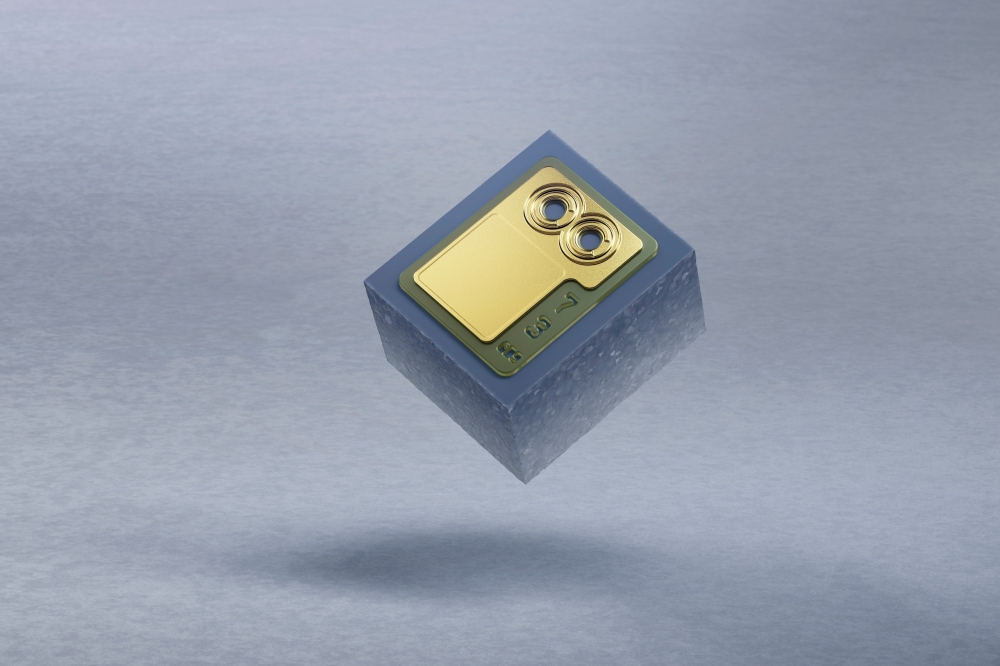Trumpf expands VCSEL portfolio

Multimode VCSEL with polarisation stable light for higher performance
Trumpf Photonic Components has released a new multimode VCSEL with stable polarisation to support the increasing demand for advanced VCSEL sources.
By integrating additional functionalities such as linear polarisation, the VCSEL technology is becoming smarter and the illumination quality is increasing.
“It’s great to see the VCSEL technology evolving and to tap into new application fields for VCSELs by integrating additional features. With the market release of our new multimode VCSEL with stable polarisation, we serve application demands with optimal illumination quality, like in smartphones”, says Ralph Gudde, VP marketing and sales at Trumpf Photonic Components.
The new 940nm multimode VCSEL with controllable polarisation is entering mass production and comes with high yield. The proprietary surface grating is directly etched into the GaAs. With the two emission zones, the new VCSEL generates an optical power of 8 mW.
Applications in consumer electronic devices and smartphones benefit from this optimum efficiency in optical power, as the VCSEL technology combines high laser efficiency and slope efficiency of 1 W/A with full polarisation control. Measurements confirm that the electro-optical properties of VCSELs with integrated grating and stabilising linear polarisation are the same as VCSELs without grating. “Thanks to the polarisation feature, controlled laser light improves the quality of the overall sensing system, enabling a positive user experience and power savings”, says Gudde.
Better illumination quality for smartphones, AR and VR
The smartphone and consumer electronics industries are constantly looking for smarter components for their devices, all the while increasing illumination quality. VCSELs with polarisation-controlled light address these demanding 3D illumination applications not only in smartphones, but also in OLED screens or in virtual and augmented reality applications. The illumination quality is increased, as polarised light helps to eliminate optical losses.
VCSELs with stable polarisation also avoid disturbing reflections and enable innovative optical concepts like a collinear arrangement of transceiver and receiver optics. This is supported by Trumpf’s own designs and processes, which enable high quality and perform without any losses.
Two in one: switchable polarisation coming soon
Trumpf also announces its next products with polarisation features, that will be released later in 2023. One is a multimode VCSEL with dual polarisation that is now ready for customer sampling. Here, one single VCSEL chip can individually address two polarisation directions, which significantly reduces the form factor and the optical system complexity. This supports further miniaturisation demands in smartphone applications and consumer electronics.
In the actual concept, two VCSEL arrays at 0° and 90° linear polarisation, are combined and interlaced on one VCSEL chip, using orthogonal surface gratings. The two polarisation directions are individually addressable, each yielding about 1.35 W of output power. Combined with polarisation-selective optics this results in a reduction of components, as only one VCSEL chip is needed to create both flood illumination and dot patterns.
“Dual polarisation VCSELs will revolutionise the consumer electronics business”, says Gudde. “Device manufacturers will get one component that functions as a dual-pattern projector”, Gudde adds. The second release will be a large polarisation controlled single emitter, single-mode VCSEL component with 2 mW output power. This serves industrial sensing applications like industrial optical encoders and spectroscopy.
Evaluation samples will be available from June onwards and mass production is scheduled for the end of 2023.



































